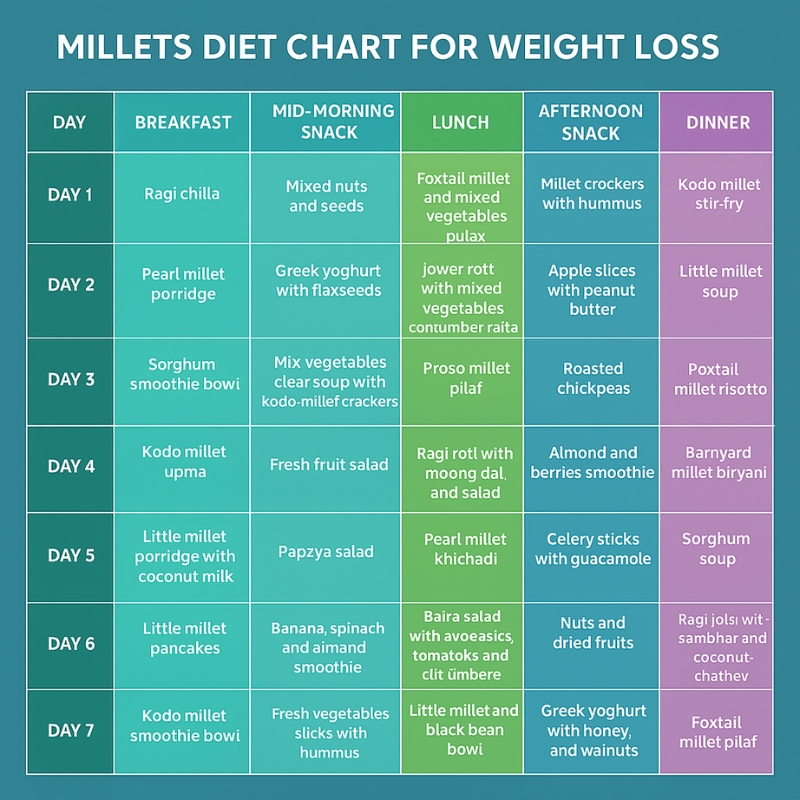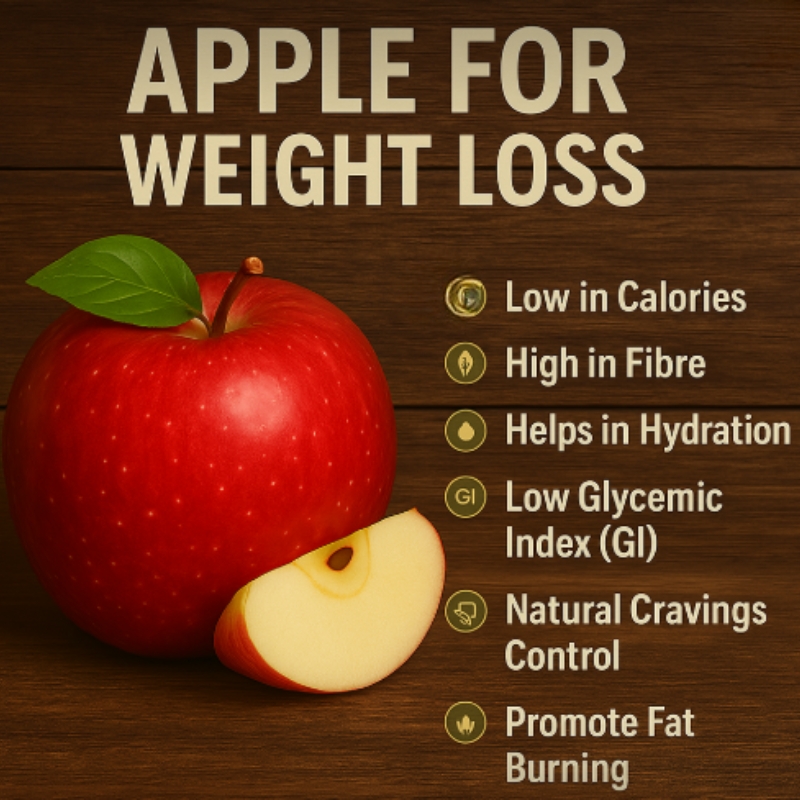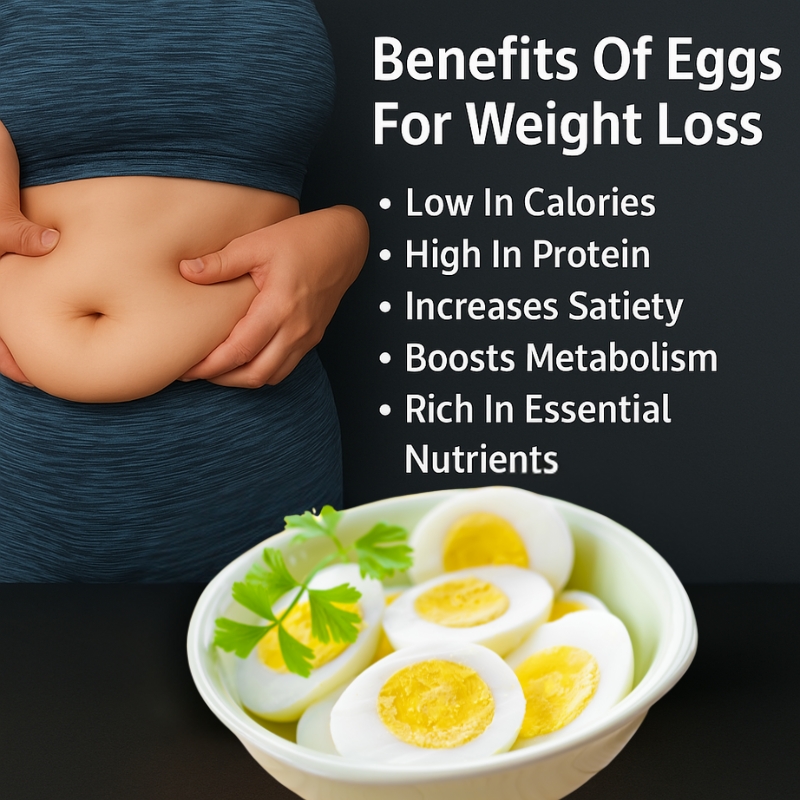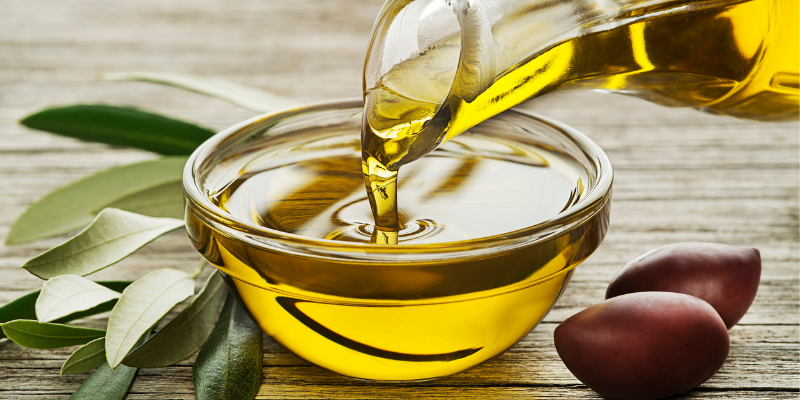Millets For Weight Loss: Benefits, Diet Chart & How to Use
Millets are currently the star of diet plans. Health experts around the world recommend millets for weight loss. Well, they do deserve every bit of this attention. These gluten-free whole grains, loaded with protein, fibre and antioxidants, nourish your body, keep your gut clean and aid in weight loss by controlling your appetite. Let’s learn about the best millet for weight loss and how to include it in your diet.
In This Article
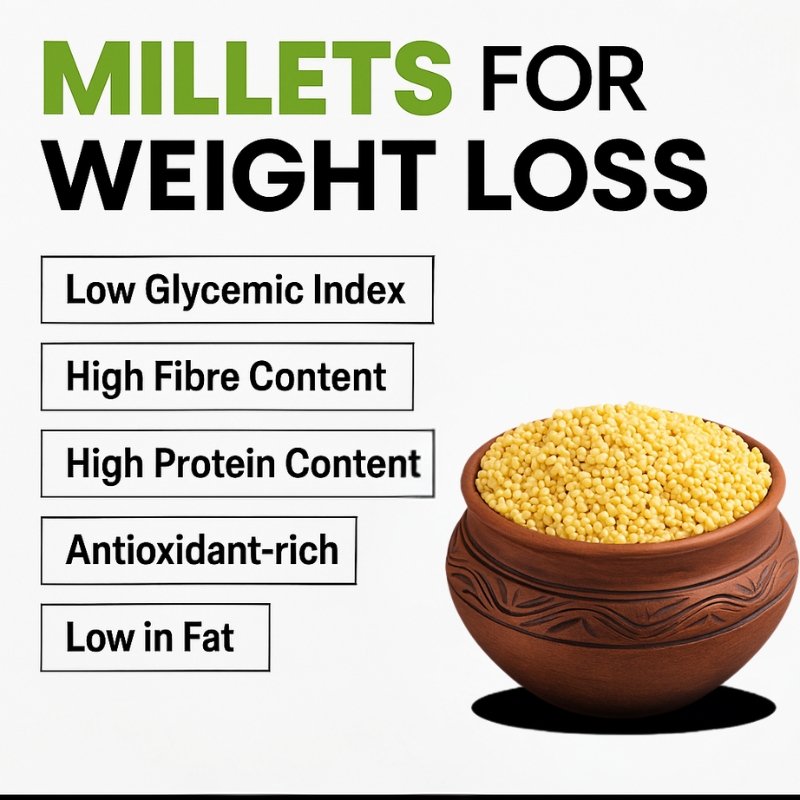
Nutritional Values Of Millets Per 100 Grams
The table below shows the key nutrients found in 100 grams of millet.
| Nutrient | Nutritional value per 100 gram [1] |
| Energy | 378 kCal |
| Protein | 11g |
| Fat | 4.22g |
| Carbohydrates | 72.8g |
| Dietary Fibre | 8.5g |
| Calcium | 8mg |
| Iron | 3.01mg |
| Magnesium | 114mg |
| Phosphorus | 285mg |
| Potassium | 195mg |
| Selenium | 2.7microgram |
| Folate | 85microgram |
Why Millets Are Good for Weight Loss?
- Low Glycemic Index: Millets score between 40-70 on the glycemic index chart, which is considerably lower than wheat, refined flour, rice, maize, etc. Compared to these other grains, millets slowly release sugar into the bloodstream slowly, helping you remain satiated for longer. [2] Foods with high GI cause a rapid spike in blood sugar levels, resulting in a sudden drop in energy levels. This drives hunger and often results in unhealthy eating. Millets with low GI are ideal for wholesome meals, as they suppress hunger and aid in weight loss.
- High Fibre Content: Millets are reservoirs of fibre and take longer to digest, thus promising to keep you satiated for longer. You can limit your overall calorie intake by including millets in your regular diet. Millets are rich in soluble and insoluble fibre, contributing to maintaining gut health, regulating bowel movements and reducing inflammation. [3]
- High Protein Content: The high protein content in millets helps preserve lean muscle mass, which is critical for your weight loss journey. Protein-rich millets make your weight loss journey easier by helping you attain satiety without compromising on taste.
- Antioxidant-rich: Millets contain antioxidant compounds, such as phenolic acids, flavonoids, carotenoids and tocopherols. These help reduce bad cholesterol and prevent plaque buildup, thus controlling unhealthy weight gain.
- Low in Fat: Millets have an imposing nutritional profile, yet they are low in fat and add very few calories to your diet. This makes millets for weight loss an ideal deal.
Best Millet for Weight Loss
Is millet good for weight loss? Yes, now that you know that millet is one of the most effective, pocket-friendly and healthiest foods for weight loss, add the best ones to your bucket list.
Pearl Millet (Bajra)
- Nutritional Benefits: Rich in fibre, protein, magnesium, and iron, bajra aids digestion, boosts energy, and supports metabolic health.
- How It Helps In the Fat-Burning Process: Bajra promotes satiety, reduces calorie intake, and stabilises blood sugar levels, preventing fat storage and enhancing metabolism for effective weight loss.
Foxtail Millet (Kangni):
- Nutritional Benefits: Foxtail millet is a powerhouse of protein, fibre, vitamins and minerals such as iron, calcium and magnesium. It boosts your immunity and supports weight management.
- How It Helps In Fat-Burning Process: It contains an amino acid called tryptophan, which helps reduce hunger and belly fat. [4] It offers a low glycemic index that enables slow digestion and helps attain satiety.
Finger Millet (Ragi)
- Nutritional Benefits: Ragi can bless your health with the goodness of fibre, calcium, protein, thiamine, riboflavin, iron and other amino acids. It supports bone health, hormonal balance, blood sugar, and weight management.
- How It Helps In Fat-Burning Process: Ragi is nutrient-dense and offers high fibre content, making it the perfect answer for a wholesome diet food.
Barnyard Millet
- Nutritional Benefits: Barnyard millet is rich in iron, magnesium, phosphorus, phenols, flavonoids and antioxidants. It helps lower cholesterol and manage blood sugar.
- How It Helps In the Fat-Burning Process: It is fibre-rich and adds very few calories to your diet. It is a good source of complex carbohydrates, which help in weight loss by controlling appetite.
Kodo Millet
- Nutritional Benefits: It is rich in antioxidants and contains impressive amounts of protein, B vitamins, minerals and fibre. It is highly beneficial for heart health and weight management.
- How It Helps In the Fat-Burning Process: It contains antioxidants that promote metabolic activity, thus helping manage weight. It prevents overeating by satisfying your appetite for longer hours.
Little Millet (Kutki)
- Nutritional Benefits: It offers an impressive dose of iron, calcium, phosphorus and protein. It helps maintain gut health and enables weight management.
- How It Helps In the Fat-Burning Process: It contains polyphenols, which are potent antioxidants responsible for reducing oxidative stress in the body and improving the metabolic rate and fat-burning process. [5]
Sorghum (Jowar)
- Nutritional Benefits: Packed with the goodness of zinc, iron, copper, calcium and B vitamins, sorghum has anti-inflammatory properties and helps promote blood circulation.
- How It Helps In the Fat-Burning Process: It is low in fat and high in fibre, which is the ideal combination that makes it a diet-friendly millet.
How to Include Millets in a Weight Loss Diet?
Millets offer a lot of creative freedom while cooking. Thus, including millet in your diet is very easy and convenient. Here are some of the ways you can enjoy millet recipes for weight loss:
- Millet Flour: Replace your regular wheat or rice flour with millet flour and enjoy healthier versions of chapati, chilla, pancakes, bread, and biscuits. Millet chapatis are as soft as wheat chapatis but add many nutritional benefits that are missing in wheat chapatis.
- Millet Porridge: Make your breakfast unbeatable by replacing your regular cereal with millet and enjoy porridge. You can add nuts or freshly cut fruits to enhance the taste and goodness of millet porridge.
- Millet Snacks: You must avoid snacking while on a diet, but we understand you can’t completely get over it. So, use millet-based snacks instead of refined flour and add a new health dimension to snacking. You can relish puffed millet bars, roasted millet seeds, millet crackers, and millet cookies.
- Millet Rice: Missing your favourite rice recipes while on a diet? Well, you can cook whole millets just like rice, so go ahead and enjoy your favourite pulav recipe with millets.
- Millet Salads: Add your favourite vegetables and a dash of lime juice and seasoning to cooked millets and enjoy wholesome salads.
Millets Diet Chart For Weight Loss
Here is a one-week diet plan to help you include millet.
Takeaway
Including millets in your regular diet can turn out to be a true blessing. However, you must consult a diet expert to extract maximum benefits from millets. Some millets might be more suitable for winter, and some might be more suitable for summer, so it is essential to be well-informed about these aspects. Add millet to your diet and enjoy your weight loss journey.
Frequently Asked Questions On Millets For Weight Loss
All the millets help in weight loss. Some examples are pearl millet, little millet, kodo millet, barnyard millet, etc.
Yes, you must include millet in your everyday diet to ensure a proper dose of fibre, protein, iron and calcium.
Millets have excellent fibre content and are low in calories. So a millet-rich diet helps control appetite and adds very few calories to your routine. The low glycemic index also helps regulate blood sugar levels, further aiding in weight control.
You can enjoy millet as part of any meal, be it breakfast, lunch or dinner.
You can cook millet in diverse forms, such as millet rice, millet bread, millet porridge, and millet salad, to enjoy various health benefits.
Eating too much millet can cause digestive discomfort, bloating, gas or diarrhoea.
Yes, millets are naturally gluten-free.
Yes, it is safe to consume millet for dinner.


